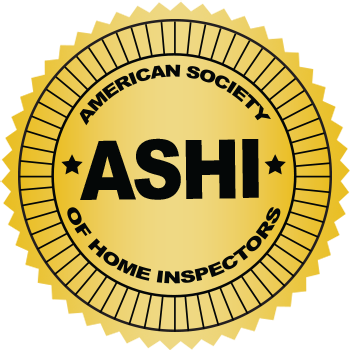FAQ
What is covered in a home inspection?
A thorough inspection is a visual analysis of the condition of the physical structure and systems in the home from the foundation on up to the roof. What does that mean? I’ll inspect all the major systems in the house you're looking to buy including the foundation, structure, roof, exterior, heating/cooling, plumbing, electrical, and interior. As long as it’s safe and accessible I’ll walk on the roof and enter attics and crawlspaces. I’ll remove access panels and operate equipment using the normal operating controls you would use on a daily basis.
All of my inspections follow the American Society of Home Inspectors (ASHI®) Standards of Practice. ASHI is the oldest national association for home inspectors.
The findings and information from your home inspection will be summarized in an easy-to-read, comprehensive home inspection report that will be emailed to you as soon as it is complete – so there’s no waiting around for it to arrive in the mail.
A home inspection is the equivalent of a physical examination from your doctor. When problems or symptoms of problems are found, I may recommend further evaluation or remedies. My emphasis is on identifying existing or potential problems that would affect a purchasers buying decision.
Why do I need an inspection?
Buying a home is typically the largest purchase a person will make. And buying a home is an investment. A home inspection is a great tool to help you decide if it’s a good investment or not. A home inspection will help you learn as much as you can about the condition of the home and the need for any major repairs. Currently, over 90% of buyers get a home inspection.
How long will an inspection take? And do I have to be there?
The time will vary based on the size and the condition of the home. Generally, a home inspection takes two and a half to three hours. I like to have a couple of hours alone in the house so that I can focus on the inspection. If you're available, come during the last hour and we'll review what issues were discovered during the inspection.
How do I prepare for the inspection?
It's the seller's responsibility to get the house ready for the inspection. The seller should:
- Have all utilities turned on (water, electric and gas).
- Have all gas appliances ready to run with pilot lights turned on.
- Clear access to areas like attics, crawl spaces, electric panels and furnaces.
- Unlock areas such as storage closets, fence gates, electric panels and crawl space hatches.
- Remove pets from the property, or secure them so they are not free to roam.
To help you get the most benefit from the inspection you should leave the kids at home — you won't be able to pay attention to them and the inspection at the same time. For the same reason, if you have family members or friends who would like to see the house you should arrange that for another time.
What are the limitations to an inspection?
Keep in mind that a home inspection is not technically exhaustive – I can’t see through walls. I'm getting a snapshot of your house for a few hours and reporting on everything I find. But I can’t damage the property. A home inspection is not an appraisal or a building code compliance inspection. I'm not testing for environmental hazards or contaminants, or insects and rodents.
See the inspection agreement and the ASHI Standards of Practice for more information on the limitations of an inspection.
What if I have questions after the inspection?
Your understanding of the home is my top priority. Feel free to contact me with your questions about your home. And check the resource section of my website for more home tips.


